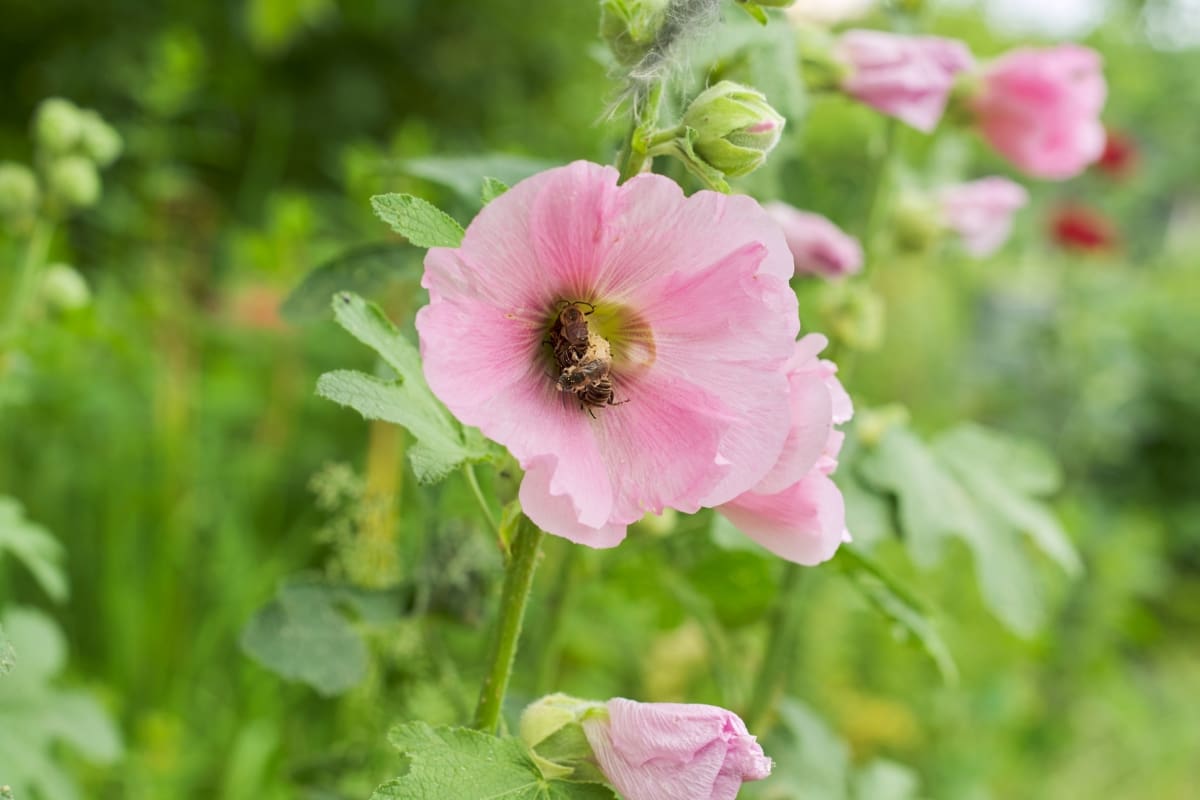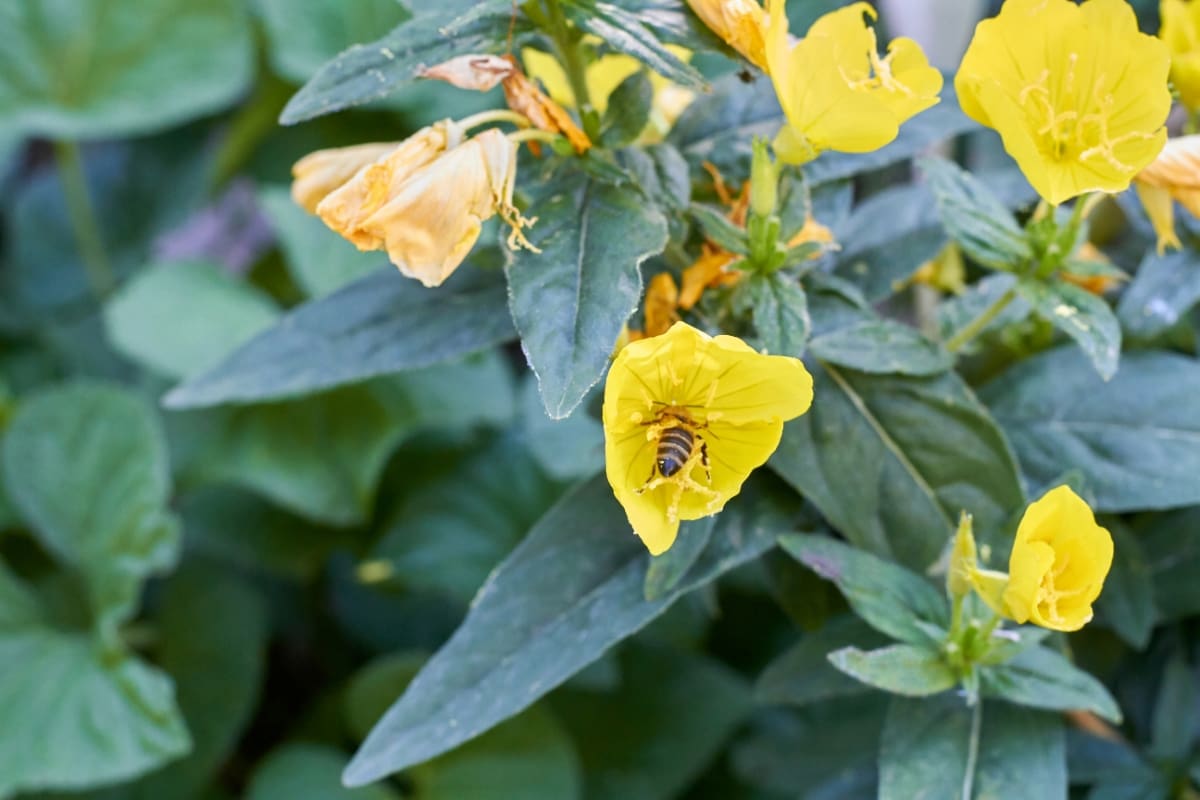Pollination, a pivotal sexual reproductive method in all plants, involves the transfer or movement of pollen grains from the anthers to the stigma of the gynoecium, enabling fertilization. Like other life forms, this genetic information transmission occurs in spermatophytes or seed plants. Christian Konrad Sprengel’s 18th-century work unveiled this process as an interaction between pollen vectors and flowers. Its importance resonates in agriculture and horticulture because it sustains plant populations and enhances crop yields.

Definition and Mechanism of Self-Pollination and Cross-Pollination
Pollination, a vital botanical process, manifests in two distinct forms: self-pollination and cross-pollination. Self-pollination involves pollen deposition from a flower’s anther onto its stigma or another flower on the same plant. In cross-pollination is the transfer of pollen from one flower’s anther to another flower’s stigma on a different plant of the same species.
Self-pollination
Self-pollination transpires in flowers where the stamen and carpel mature synchronously and are positioned for effective pollen-to-stigma contact. This pollination mode doesn’t necessitate plant investment in producing nectar and pollen as pollinator sustenance. The survival of species hinges on the diversity of their offspring. Genetic variation is crucial for adaptation to changing environments. Self-pollination, while ensuring reproduction, reduces genetic diversity due to using the same plant’s genetic material for gamete formation and zygote development.
Cross-pollination
Cross-pollination, on the other hand, promotes genetic diversity as microgametophytes and megagametophytes originate from separate plants. Plants have evolved strategies to discourage self-pollination in favor of the genetic advantages conferred by cross-pollination. In certain species, temporal differences in pollen and ovary maturation impede self-pollination.
Morphological adaptations also thwart self-pollination. Take the primrose, for instance, with its pin-eyed and thrum-eyed flowers possessing varied anther and stigma lengths. Insects, drawn to nectar, cross-pollinate while facilitating pollen transfer. This phenomenon is termed heterostyly. Plant separation of male and female flowers, or even separate plants (dioecious), further reduces self-pollination opportunities, prompting reliance on pollinators—biotic like insects, bats, birds, and abiotic like wind and water—to transport pollen.
Advantages and Disadvantages of Self-Pollination
Advantages
- Reliability: Self-pollination ensures reproductive success when pollinators are scarce or absent, as it doesn’t rely on external agents.
- Consistency: Genetic traits are preserved since offspring closely resemble the parent plant, maintaining desirable characteristics.
- Efficiency: Energy and resources are saved as plants don’t need to produce nectar or attract pollinators, contributing to overall plant fitness.
- Colonization: Isolated environments or new habitats can be colonized more easily due to the self-sufficiency of self-pollination.
Disadvantages
- Limited Diversity: Genetic diversity is restricted, limiting adaptability to changing environments or challenges.
- Accumulation of Mutations: Harmful mutations can accumulate, reducing fitness and potential disease vulnerability.
- Inbreeding Depression: Continuous self-pollination can result in inbreeding depression, reducing vitality and increasing susceptibility to various stresses.
- No Hybrid Vigor: Hybrid vigor, seen in cross-pollinated offspring, is absent, impacting plant vigor and resilience.
- Lack of Recombination: Vital genetic recombination doesn’t occur, hindering the creation of novel traits for survival.
In case you missed it: Plant Pollination Process in the Hydroponic Garden: A Step-by-Step Guide

Advantages and Disadvantages of Cross-Pollination
Advantages
- Enhanced Genetic Diversity: Cross-pollination introduces various genetic variations, allowing plants to adapt better to shifting environmental conditions and challenges.
- Strengthened Resilience: Greater genetic diversity resulting from cross-pollination empowers plants to effectively combat diseases, pests, and other threats.
- Improved Reproductive Success: The mixture of genetic material in cross-pollination often leads to more robust and fertile offspring, ensuring higher reproductive success rates.
- Reduced Inbreeding: Cross-pollination limits the risk of inbreeding, which can result in the expression of harmful recessive traits and reduced fitness.
Disadvantages
- Dependence on Pollinators: Cross-pollination relies on external agents like insects, birds, and wind for pollen transfer, making it susceptible to pollinator availability and efficiency.
- Energy and Resource Consumption: The production of showy flowers and nectar to attract pollinators demands energy and resources, potentially diverting them from other essential plant functions.
- Risk of Hybridization: Cross-pollination might lead to unintended hybridization between closely related species, leading to genetic impurity and loss of distinct characteristics.
- Geographical Constraints: Cross-pollination is often limited by geographical proximity, hindering gene flow between distant populations of the same species.
Genetic Variation in Self-Pollination Vs Cross-Pollination
Genetic variation contrasts distinctly between self-pollination and cross-pollination. In self-pollination, plants employ their genetic material for reproduction, resulting in limited diversity among offspring. This can hinder adaptability to environmental changes, making plants more vulnerable to diseases and stress.
On the other hand, cross-pollination involves the exchange of genetic material between different plants, yielding offspring with diverse traits. This genetic mixing bolsters resilience and enhances the chances of survival under evolving conditions. Cross-pollination’s genetic diversity enables plants to draw from a broader pool of attributes, increasing their potential to thrive and endure challenges in their surroundings.
Examples of Plants that Exhibit Self-Pollination
Self-pollination, a unique reproductive strategy, occurs when pollen moves from a flower’s stigma to the same or genetically akin flower. This mechanism prevails in several plant species, showcasing nature’s diversity. Orchids, with their intricate reproductive structures, often engage in self-pollination to ensure reproductive success.
In case you missed it: Avocado Tree Propagation and Pollination: Methods and Strategies

Sunflowers, recognized for their vibrant blooms, exhibit self-pollination due to their flower structure and proximity of anther to stigma. Legumes like peas and peanuts and essential crops such as oats, wheat, and potatoes frequently rely on self-pollination. Peaches also partake in this process, where conditions favor self-fertilization.
Examples of Plants that Exhibit Cross-Pollination
Cross-pollination, where pollen travels from one flower’s anther to another flower’s stigma, occurs through various vectors like insects and wind. Insects facilitate this process in numerous plants, such as strawberries, grapes, raspberries, tulips, apples, plums, pears, and daffodils. These plants often display specialized structures that attract and guide insects, ensuring efficient pollen transfer. Conversely, wind pollutes various grasses, including wheat and corn, along with trees like maples. Notable examples include dandelions and catkins, which utilize the wind’s force to disperse their pollen.
Factors Influencing the Prevalence of Self-Pollination or Cross-Pollination
- Flower Structure: The arrangement of reproductive organs within flowers can promote either self-pollination or cross-pollination, with some structures facilitating easier pollen transfer between flowers.
- Pollinator Availability: Pollinators like insects, birds, or wind affect the likelihood of cross-pollination. Areas with abundant pollinators tend to favor cross-pollination.
- Genetic Diversity: Populations with limited genetic diversity might rely on self-pollination for reproduction, while genetically diverse populations may opt for cross-pollination to boost adaptability.
- Physical Barriers: Certain plants have mechanisms that prevent self-pollination, pushing them towards cross-pollination. These barriers include temporal separation of pollen and stigma maturity.
- Habitat Size: In smaller habitats, interactions between plants for pollination are frequent, encouraging cross-pollination to avoid inbreeding.
- Competition: Cross-pollination can aid genetic mixing in competitive environments, offering potential benefits in adapting to changing conditions.
- Breeding System: Some species have evolved specific breeding systems that favor self-pollination or cross-pollination as their primary mode of reproduction.
- Resource Availability: Plants in resource-scarce environments might allocate energy to self-pollination, conserving resources for other vital functions.
- Temporal Variation: Fluctuations in pollinator activity due to seasonality can influence the prevalence of either self-pollination or cross-pollination.
- Geographical Isolation: Plants isolated from other members of their species may rely on self-pollination for reproduction due to the absence of potential cross-pollinators.
In case you missed it: Pine Tree Pollination: Pine Tree Reproduction Cycle

Conclusion
In the dynamic realm of plant reproduction, self-pollination and cross-pollination emerge as contrasting strategies. While self-pollination conserves energy, cross-pollination enriches genetic diversity, enhancing adaptation. Examples like strawberries and maples exemplify these divergent approaches, underscoring nature’s ingenious mechanisms for survival and evolution.
- Feed Your Flock for Less: Top 10 Tips to Save on Chicken Feed
- Ultimate Guide to Ossabaw Island Hog: Breeding, Raising, Diet, and Care
- Hatching Answers: The Top 10 Reasons Your Chickens Aren’t Laying Eggs
- Eggs and Economics: Breaking Down the Cost of Raising Backyard Chickens
- Defend Your Greens: Proven Methods to Keep Iguanas Out of Your Garden
- Ultimate Guide to Cinnamon Queen Chicken: A Comprehensive Guide for Beginners
- Ultimate Guide to California Tan Chicken: Breeding, Raising, Diet, Egg-Production and Care
- Ultimate Guide to Marsh Daisy Chicken: Breeding, Raising, Diet, and Care
- 10 Types of Chicken Farming Businesses You Can Start for Profits